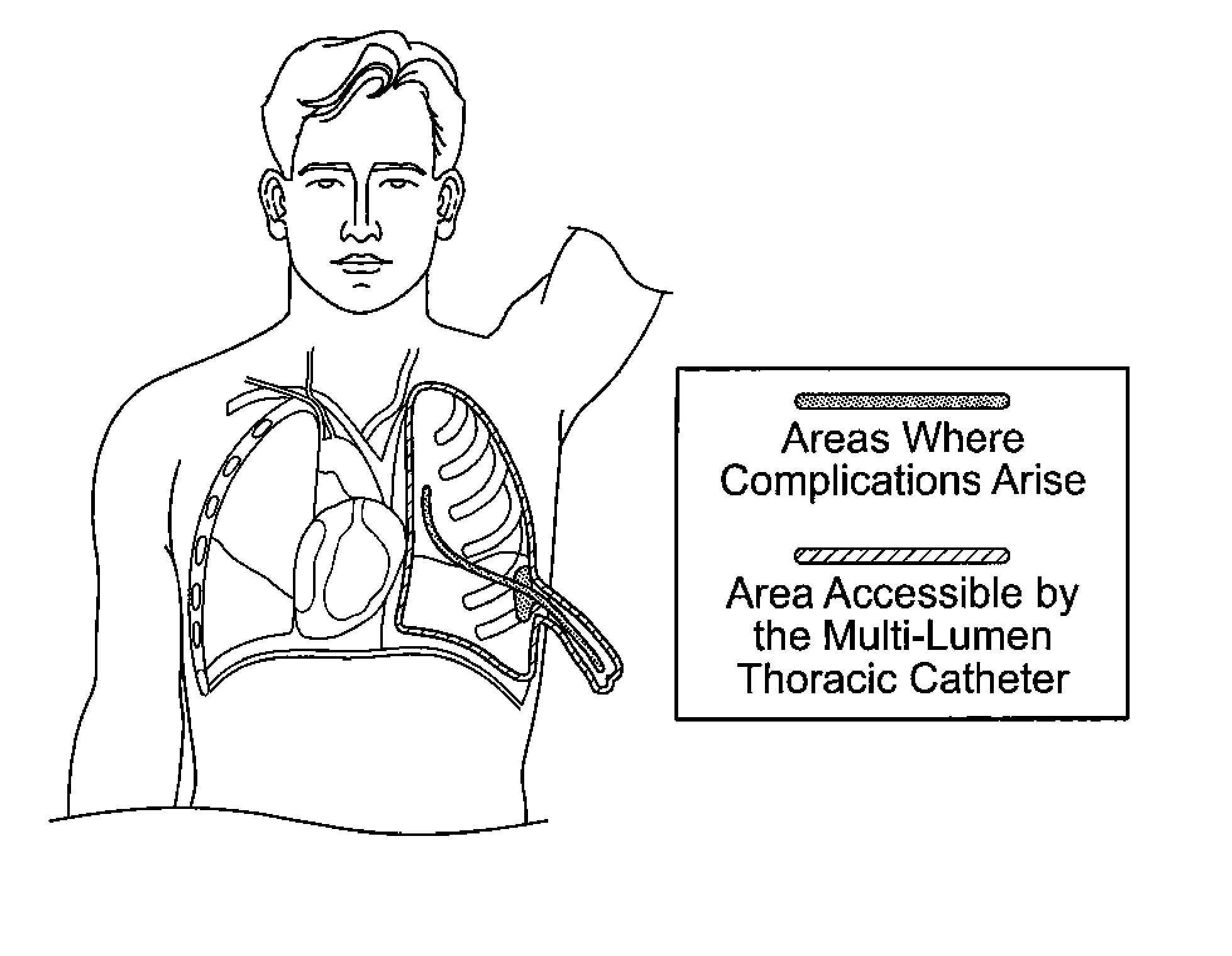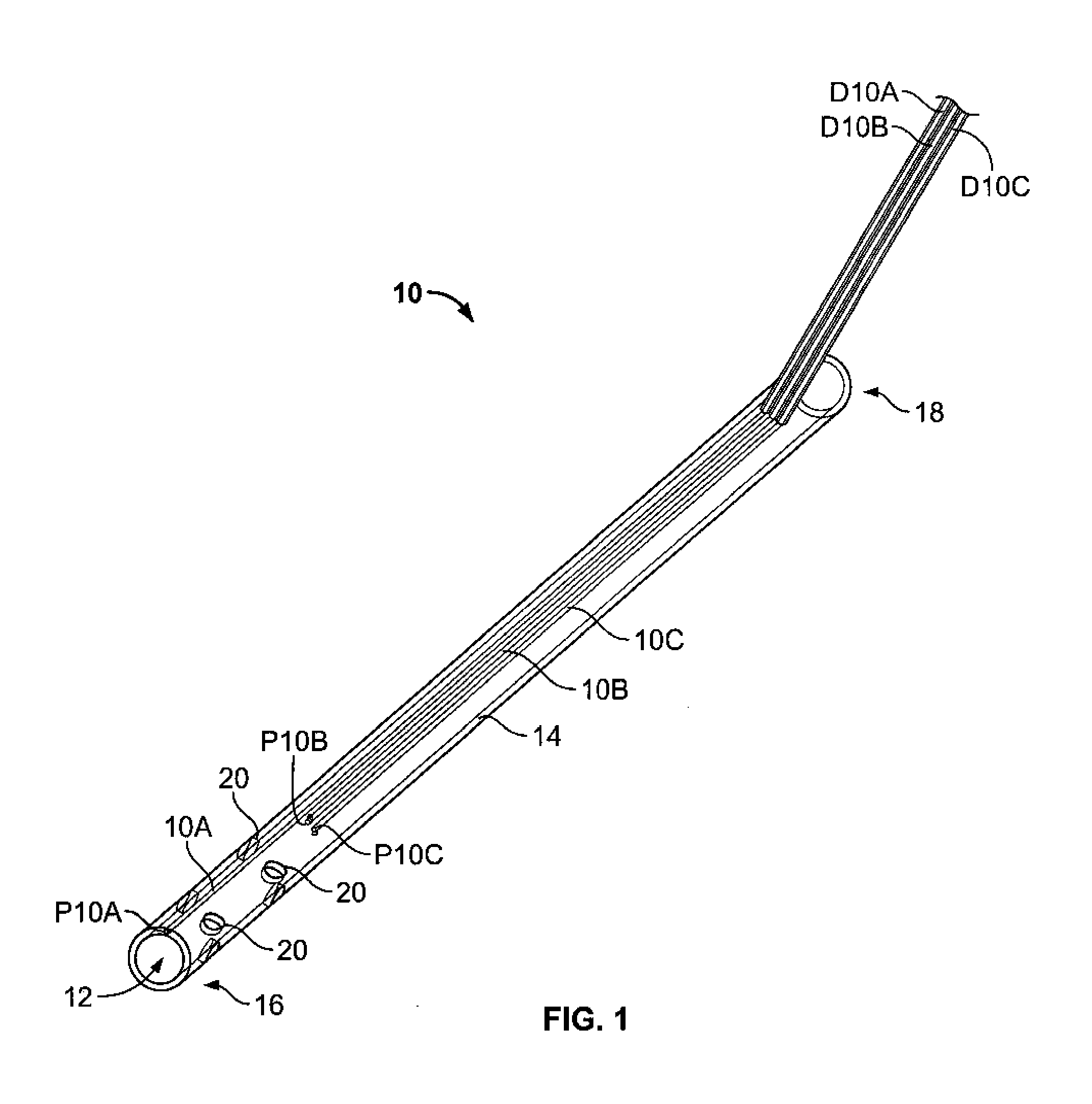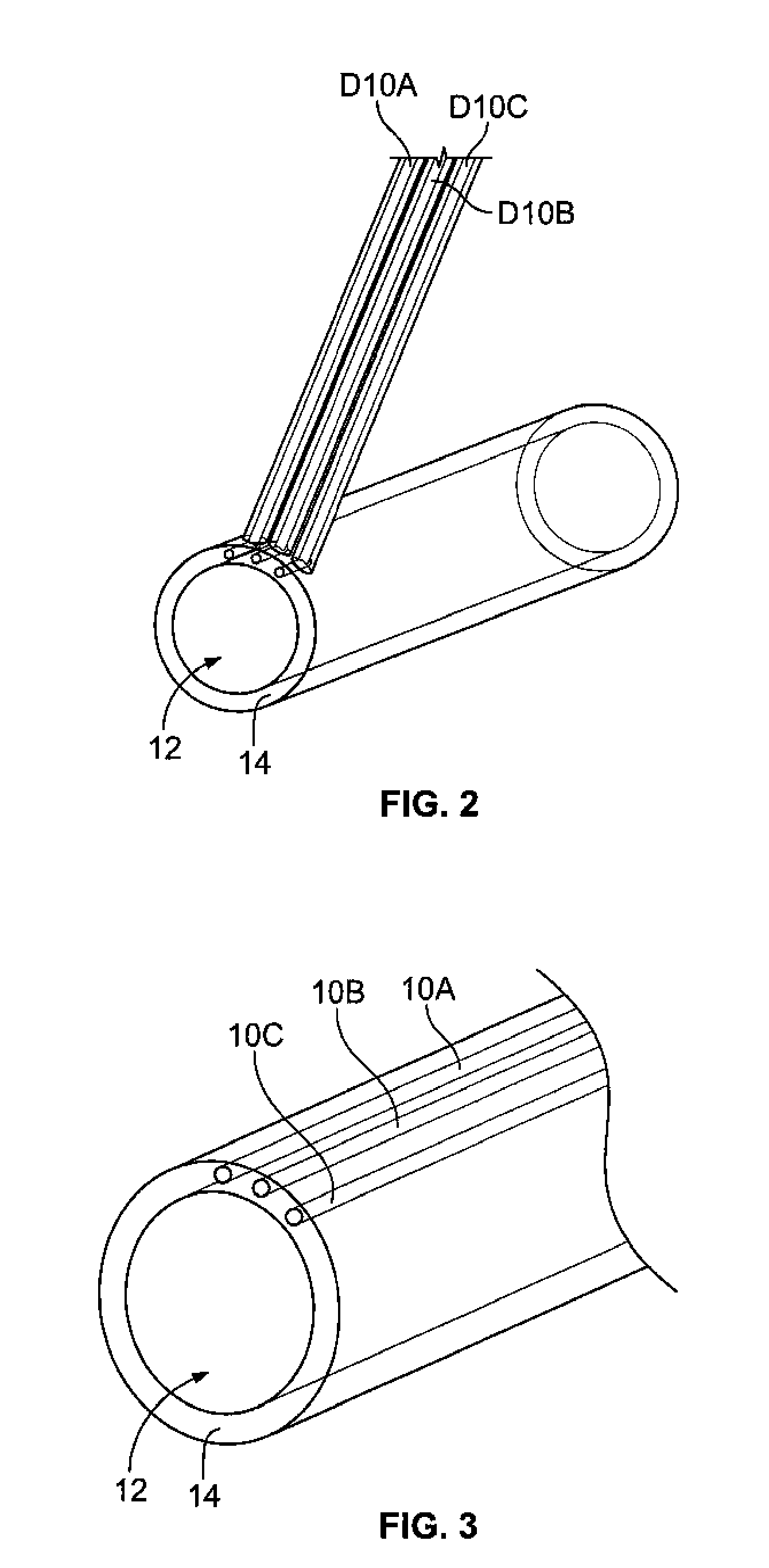Multi-lumen thoracic catheter and uses thereof
a thoracic catheter and multi-lumen technology, applied in the field of multi-lumen thoracic catheters, can solve the problems of negative pleural pressure, immediate lung collapse, lungs to remain inflated, etc., and achieve the effects of reducing pain, reducing pressure in the pleural space, and facilitating adhesion
- Summary
- Abstract
- Description
- Claims
- Application Information
AI Technical Summary
Benefits of technology
Problems solved by technology
Method used
Image
Examples
example 1
Drain Testing Protocol
[0168]1.1 Rationale
[0169]A drain test is used to examine whether a multi-lumen thoracic catheter of the present invention is proficient in draining various materials from a simulated pleural space while avoiding clot formation within the catheter. The drain test also can test the efficacy of the catheter's drainage ability with a viscous substance, meant to simulate the materials that will need to be evacuated from the pleural space. The end result of the test is the appropriate saline flow rate into the main drainage tube to prevent tube occlusion.
[0170]1.2 Introduction
[0171]Any condition that causes fluid or air accumulation in the pleural space requires suction thoracic catheter insertion to ensure negative pleural pressure, prevent lung collapse, and to ensure efficient oxygen delivery. Tube occlusion often occurs when the blood's platelets bind to the surface of the catheter's inner diameter. These platelets form a plug, and along with a network of fibrin ...
example 2
Dye Movement in Pulmonary Model Testing Protocol
[0188]2.1 Rationale
[0189]The purpose of this test is to determine whether or not the access lumen is effective in the introduction of fluid into the pleural space. The test examines both infusion and injection methods of fluid injection through the access lumen. The test is designed to test whether or not the injected fluid can successfully diffuse not only to the wound site, but through the entire pleural space. This validates the efficacy of the ability of the access lumen to introduce fluid into the pleural space.
[0190]2.2 Introduction
[0191]Currently, physicians do not have direct access to the pleural space when a chest tube is placed, nor do they typically invade the area to administer fluid or drugs (such as anesthetic or anticoagulant). However, it is important to have an access to the pleural space, most specifically the pleural wound site. For fluids administered at this location, it is beneficial to have the fluid reach and i...
PUM
 Login to View More
Login to View More Abstract
Description
Claims
Application Information
 Login to View More
Login to View More - R&D
- Intellectual Property
- Life Sciences
- Materials
- Tech Scout
- Unparalleled Data Quality
- Higher Quality Content
- 60% Fewer Hallucinations
Browse by: Latest US Patents, China's latest patents, Technical Efficacy Thesaurus, Application Domain, Technology Topic, Popular Technical Reports.
© 2025 PatSnap. All rights reserved.Legal|Privacy policy|Modern Slavery Act Transparency Statement|Sitemap|About US| Contact US: help@patsnap.com



